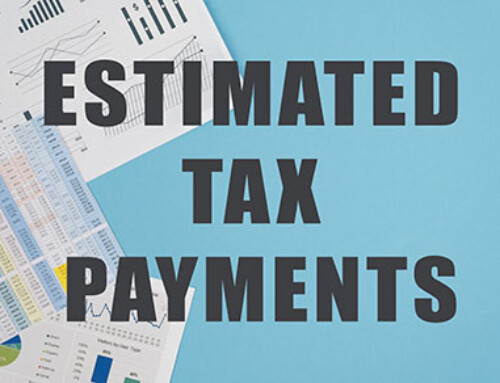Did you buy an electric vehicle (EV) in 2023? Under the Inflation Reduction Act (IRA), passed late in 2022, you may be eligible for a new-and-improved tax credit, beginning on your 2023 federal income tax return. But the new law also bars certain high-income taxpayers from claiming the credit.
What’s more, if you’re looking to buy an EV in 2024, you don’t have to until you file your 2025 tax return to reap the tax benefit. You may be able to obtain a tax discount at the time of purchase. Here are the details.
Before the IRA Changes Took Effect
Prior to January 1, 2023, you could claim a tax credit for EVs and hybrid plug-ins, up to a maximum of $7,500, if you bought a vehicle meeting certain energy consumption standards. Also, the vehicle had to have a gross vehicle weight rating (GVWR) of less than 14,000 pounds.
Under the old rules, the price of the vehicle didn’t matter. For example, you were able to claim the same $7,500 credit for a Nissan Leaf as a higher-priced Porsche Taycan. The credit was available only to original purchasers of a new vehicle. In other words, no credit was allowed if you acquired a used vehicle from a dealer or through a private resale. Similarly, you weren’t eligible for a credit if you leased an EV from a dealership.
Notably, the credit was subject to a special phaseout rule, based on the manufacturer. The phaseout occurred when a manufacturer sold at least 200,000 qualifying vehicles for domestic use. Back in 2018, Tesla became the first manufacturer to cross this threshold. GM followed soon afterward. This became a critical issue involving some of the most popular EV models.
The credit was claimed in the year you purchased the vehicle. So, if a deal didn’t go through until January, you couldn’t realize any tax benefit until you filed your return the following year. Finally, the credit was nonrefundable. Therefore, if you owed tax of $2,500 and you acquired an EV qualifying for a $7,500 credit, the credit was limited to $2,500 on your return. The $5,000 excess couldn’t be carried forward to subsequent years.
Lane Changes for 2023
The IRA revamps the tax rules for claiming the so-called “clean vehicle credit” on 2023 returns for new EVs and plug-in hybrids purchased in 2023 for domestic use (and not acquired for resale). Generally, the maximum nonrefundable credit remains at $7,500, but other new rules and dollar caps apply through 2032:
- The credit is only available to single filers with a modified adjusted gross income (MAGI) of $150,000 or less ($300,000 or less for married couples who file jointly). If you exceed either threshold, you can’t claim any credit.
- The credit isn’t available for passenger vehicles costing more than $55,000 ($80,000 for vans, sport utility vehicles and pickup trucks, based on the manufacturer’s suggested retail price). For these purposes, the manufacturer’s suggested retail price doesn’t include any taxes or other fees imposed by the dealer.
- The vehicle must be powered by batteries with materials that are sourced from the United States or one of its free trade partners. This restriction applies to vehicles delivered on or after April 18, 2023. Partial credits may be claimed for EVs that meet only one of these requirements.
- The vehicle must be assembled in North America. This can be a difficult hurdle to overcome because many EVs are assembled overseas.
- The 200,000-vehicle threshold for manufacturers has been eliminated.
Qualifying Vehicles
Visit the U.S. Department of Energy website to determine if a particular vehicle will qualify for the clean vehicle credit. You can search the website database for the make and model, year and date of delivery. This site also provides updated credit amounts (full or partial) for EVs in 2023 and 2024.
Important: The IRA opens up the credit to buyers of used vehicles — not just new ones. However, the credit for used EVs is subject to a separate set of rules. Besides requiring specific energy consumption standards and a GVWR of less than 14,000 pounds, the following restrictions apply:
- Only one vehicle transfer qualifies for the credit,
- The purchase price can’t exceed $25,000,
- The car model must be at least two years old, and
- The credit can only be claimed once every three years.
If you qualify, you can claim a credit of up to $4,000 for the EV, limited to 30% of the cost.
Accelerating the Credit in 2024
A special tax break kicked in on January 1, 2024: The IRS now gives you the option of transferring the credit to the dealership at the point of sale. In essence, the auto dealer can reduce the purchase price by the amount of the credit, or it may provide you with a cash payment on the spot.
To take advantage of this opportunity, dealerships must participate in the IRS-approved online program. Nevertheless, the buyer is ultimately responsible for ensuring that he or she falls below the MAGI limits for eligibility. If you take a rebate and ultimately exceed the limits, you’ll have to pay the IRS back on your 2024 tax return.
Warning: The list of eligible EVs and plug-ins has decreased significantly from 43 models in 2023 to just 13 in 2024. This reduction is attributable to the stricter battery sourcing and assembly requirements under the IRA.
Proceed with Caution
The new rules for EV credits are complex and dotted with potholes. In addition, be aware that several states offer tax breaks for EVs on the state income tax level. Seek assistance from your tax professional for maximizing the tax benefits on 2023 returns and navigating the rules if you’re planning to pocket a clean vehicle credit for an EV purchase in 2024.
| Take Charge on Home Equipment Installations
The Inflation Reduction Act (IRA) reinstates a tax credit for electric vehicle (EV) chargers that initially had expired after 2021. The revised credit remains in effect through 2032. Under the reinstated provision, an individual who installs a home EV charging station is eligible for a tax credit equal to 30% of the cost of the hardware and installation, up to $1,000. Also, beginning in 2022, the EV charger tax credit for home installations applies to other EV charger equipment, such as two-way chargers. Special rules further apply to businesses that install charging equipment. The IRA authorizes a 30% credit of up to $100,000 per item after 2022 (increased from $30,000). Ask your tax professional for details. |






